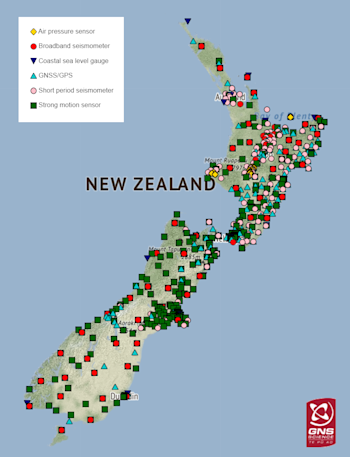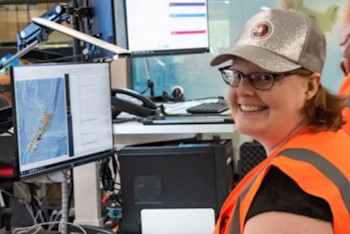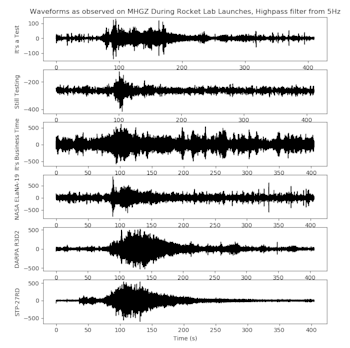
Explosions, rockets and lightning: just another day at the NGMC
In the second of our behind-the-scenes series looking at the National Geohazards Monitoring Centre (NGMC) in the lead up to its one-year anniversary in December, we have a look at some interesting non-earthquake events the Geohazard Analysts have picked up
With over 500 seismic and strong-motion instruments across New Zealand, we have no shortage of data for our computers to process on the lookout for ground shaking that is most likely to have been caused by an earthquake (so far we have had 19,800 earthquakes since January 1st, 2019).
But our seismic instruments record more than just earthquakes. They also detect all sorts of activities around New Zealand, such as:
- Rocket Lab Launches
- Lightning strikes
- Army detonation/blasts
- Quarry Blasts
- And a house explosion in Christchurch
We caught up with Holly Godfrey, Exercise and Education Coordinator, who helps train our Geohazard Analysts (GHAs). Holly is a born and bred Wellingtonian, who completed a Master’s in Geology at Victoria University. After the M7.8 Kaikoura earthquake she came to GeoNet to assist with earthquake analysis returning in 2018 to help produce training materials for the incoming GHAs.
“I’m mad about seismic waveforms, so one of my favourite parts of my job is working with the GHAs to analyse and identify the unusual wiggles that the instruments record. The variety we see in earthquake signals is staggering (let alone the things that aren’t!), which can make identifying the source really challenging – and sometimes impossible.”
Holly shared some examples the NGMC has picked up since it opened 11 months ago.
The Christchurch house explosion in July this year was picked up by our strong-motion instruments up to 25km away and even further by our weak motion sensors, up to 50 km away. The really interesting part is that our instruments picked up the airwave, the explosive energy went up rather than down through the earth but was still powerful enough to be detected by our grounded sensors.
Another neat thing we sometimes see are Rocket Lab launches. GHA Ashleigh Fromont provided this image of waveforms observed from our seismic station MHGZ at Mahia Peninsula, from the lift-offs of six different missions at the Rocket Lab Launch Complex in Mahia.
Unlike the house explosion, which was a very clear signal on many stations, the Rocket Lab launches have relatively weak signals that we only see on one sensor. This meant that it took several events for us to conclude that we were seeing launch signals (the noise from take-off) in the data. To be clear, this isn’t an example of seismic activity from Rocket Lab launches but our sensitive instruments at one site can pick up noise from them – pretty cool!
We also see lightning strikes. In November, our site TARZ (Mt Tarawera) near Rotorua, recorded dozens of lightning strikes as bad weather passed over New Zealand. At first glace these signals look just like ordinary earthquakes occurring near the station site, but like the Christchurch house explosion, more detailed analysis shows they are in fact acoustic signals. The image below, from TARZ, shows twenty minutes of almost continuous lightning activity.
“While signals analysis can be fun, it's an important part of the 24/7 monitoring done by the National Geohazards Monitoring Centre (NGMC). When there is a significant event, we analyse and interpret signals whilst under pressure to provide accurate information in a timely manner to help keep New Zealanders safe. It's been a privilege to be part of the NGMC's journey so far. Our first year has flown by and I look forward to what 2020 brings!”
If you missed our first story in the NGMC series, check it out here: National Geohazards Monitoring Centre – Behind the screens
The NGMC builds on decades of work GNS Science has done with the Earthquake Commission (EQC) and Land Information New Zealand (LINZ). The support of our partners MBIE, MCDEM, EQC and LINZ has made the centre possible.









